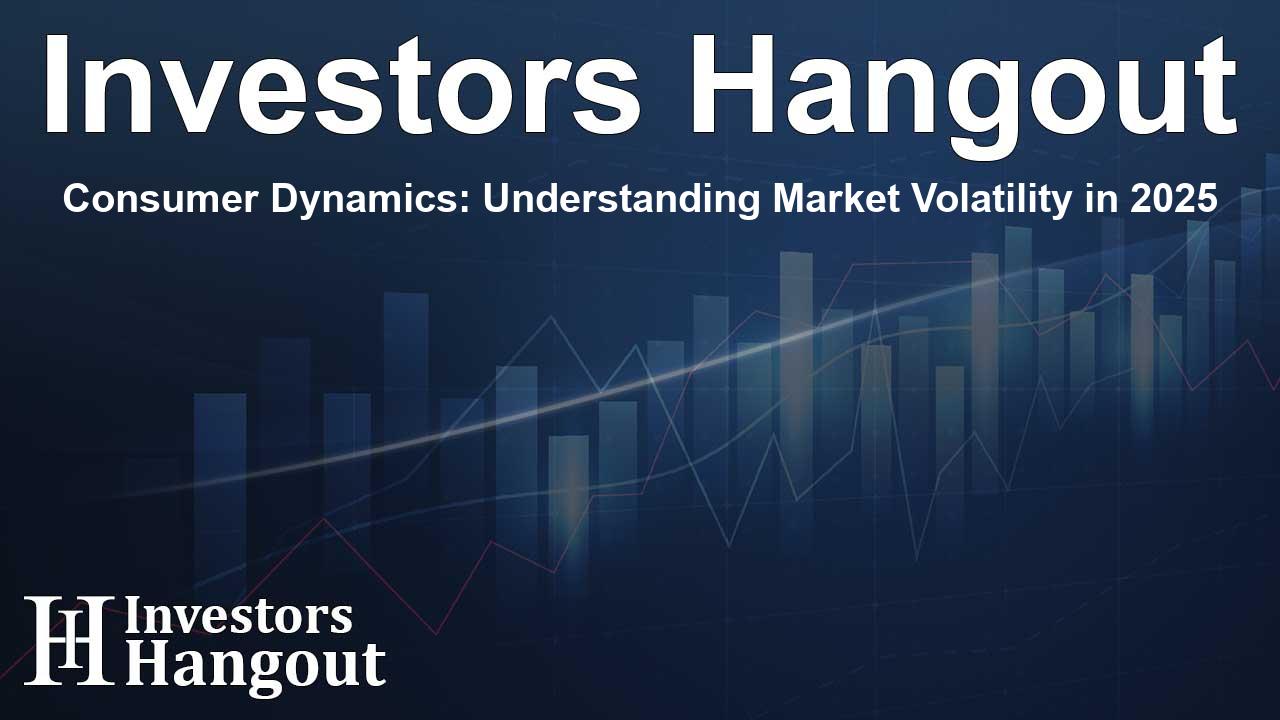Consumer Dynamics: Understanding Market Volatility in 2025

Understanding Consumer Dynamics in 2025
As we look to the future, 2025 is poised to challenge investors with unpredictable market behavior deeply influenced by consumer sentiment. The frustration many investors experience is tied to the evolving preferences and struggles of consumers, which is becoming increasingly evident in the available data.
How Are Consumers Navigating Price Increases?
The rise in consumer debt has been noteworthy, yet it hasn't dominated the market discourse recently. As trends persist, attention will inevitably shift to how consumers are managing these escalating costs. Surveys may capture complaints, but many consumers turn to credit cards to bridge the gap when prices rise beyond their comfort zone, a situation exacerbated by soaring interest rates.
Despite these challenges, the resilience of the American consumer remains a topic of interest. However, the uptick in credit card debt signals deeper issues that investors need to monitor closely. The state of last year's so-called 'hot' sectors is now a stark reminder of the influence consumer spending has on market dynamics.
The Market’s Balancing Act
The interplay between economic growth and inflation concerns is a central theme in 2025, creating tension for investors. This year could see a tug-of-war between bullish trends led by improving economic and earnings reports and a looming sense of anxiety over persistent inflation and Federal Reserve policies. The current high PE ratios and uncertain fiscal policies further complicate this landscape.
Traders are finding opportunities even in this unpredictable climate, where swings create avenues for profit. Those employing algorithmic trading strategies will also discover the importance of disciplined risk management during these fluctuating market conditions, allowing them to navigate potential drawdowns.
Inflationary Pressures vs. Growth Outlooks
Recent market reactions show a notable challenge: while economic reports were anticipated, they did little to quell market fervor. Analysts had expected larger movements based on payroll and unemployment data. Instead, investors appeared to externalize concerns regarding inflation, especially as wages showed signs of upward pressure, surpassing projections.
As inflation expectations rise, even the slightest indications—like higher average hourly earnings—tend to disrupt market conversations. Leading economists remind us that when assessing wage growth, it’s crucial to factor in other metrics such as hours worked and seasonal influences, which can skew results.
Current Market Fears
Market reactions are often swift, with the S&P 500 easily swayed by fluctuations in inflation expectations. The recent spike in consumer sentiment reflecting rising inflation fears significantly affected the market outlook. Following significant announcements, it’s become clear that traders are as responsive to the perception of inflation as they are to factual data reports.
What’s Next for the Federal Reserve?
As economic indicators present a complex picture, pressure mounts on the Federal Reserve to contemplate delaying cuts to interest rates, altering investor sentiment. The likelihood of cuts hinges on the evolving economic climate, with sentiments reflected in the Fed Funds Futures market signaling a cautious yet optimistic tone from investors.
Earnings Reports and Their Implications
In light of the Fed’s delayed intervention, corporate earnings are essential in propelling market confidence. Fortunately, American corporations are delivering promising results. Recent earnings reports depict a robust landscape, with many companies exceeding expectations, leading to optimism regarding overall market growth.
For the fourth quarter, a significant proportion of S&P 500 companies reported positive surprises in earnings per share and revenue, highlighting a potential trend towards sustained growth moving forward. This momentum is critical as markets reevaluate growth projections against inflation fears.
Sector Performance Insights
Breaking down the current economic landscape by sectors reveals altering dynamics. Notably, the Financial and Technology sectors are gaining traction, supported by earnings momentum. Conversely, Consumer Discretionary sectors are facing noticeable slowdowns, marking a stark contrast to their previous outperformance in 2024.
Market Outlook: Monitoring Key Economic Indicators
Looking forward, upcoming economic data releases, particularly those related to inflation, will significantly impact market actions. Investors are encouraged to remain vigilant and responsive to these indicators while considering their historical performance patterns.
Conclusion: Moving Forward with Caution
In summary, market actions portray a mixed landscape amid economic growth. Consumer sentiment plays a pivotal role in determining future volatility. As sector rotations dominate the trading narrative, consolidations can foreshadow potential shifts, further influencing trading strategies and investor behavior.
Frequently Asked Questions
What key factors will influence consumer sentiment in 2025?
Consumer behavior will be shaped by inflation rates, employment stability, and overall economic growth. These factors will significantly impact spending habits and confidence levels.
How does credit card debt affect the economy?
Rising credit card debt can indicate consumer distress, potentially leading to decreased spending. It may also reflect a reliance on credit due to increasing living costs, impacting overall economic stability.
Why are earnings reports important for market performance?
Earnings reports provide insights into corporate health and future growth potential. Positive results can boost investor confidence and market sentiment, fostering a more favorable investment environment.
What market trends can we expect moving forward?
Expect ongoing volatility with potential sector rotations. Inflation concerns and economic recovery will play key roles in shaping trading strategies and market outcomes.
How can investors prepare for the uncertainty in 2025?
Investors should stay informed about economic indicators and adjust their strategies accordingly. Understanding market dynamics and maintaining risk management practices will be critical in navigating potential volatility.
About The Author
Contact Thomas Cooper privately here. Or send an email with ATTN: Thomas Cooper as the subject to contact@investorshangout.com.
About Investors Hangout
Investors Hangout is a leading online stock forum for financial discussion and learning, offering a wide range of free tools and resources. It draws in traders of all levels, who exchange market knowledge, investigate trading tactics, and keep an eye on industry developments in real time. Featuring financial articles, stock message boards, quotes, charts, company profiles, and live news updates. Through cooperative learning and a wealth of informational resources, it helps users from novices creating their first portfolios to experts honing their techniques. Join Investors Hangout today: https://investorshangout.com/
The content of this article is based on factual, publicly available information and does not represent legal, financial, or investment advice. Investors Hangout does not offer financial advice, and the author is not a licensed financial advisor. Consult a qualified advisor before making any financial or investment decisions based on this article. This article should not be considered advice to purchase, sell, or hold any securities or other investments. If any of the material provided here is inaccurate, please contact us for corrections.
